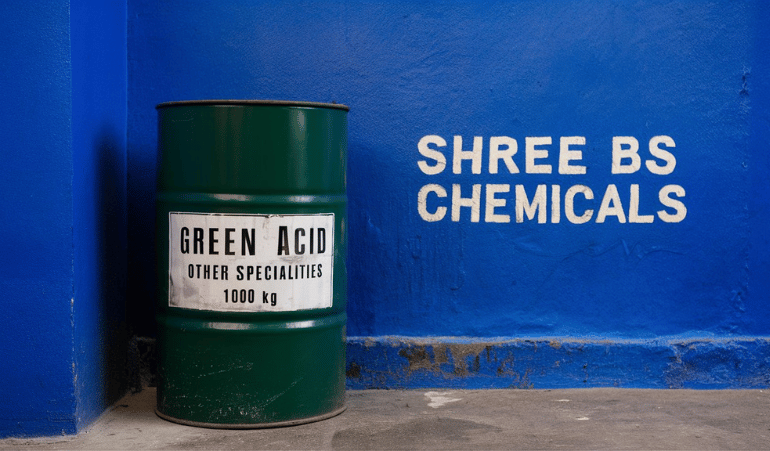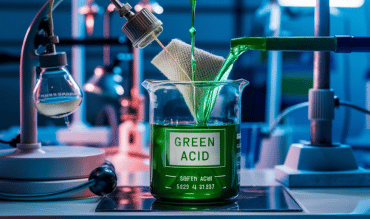-
-
Mon - Sat 9:00 AM - 6:30 PM
-
Plot No. 366, Shree BS Chemicals, Sector 29, Part 2, Panipat, Haryana
Green Acid (Textile Chemicals)

Green Acid
Green acid is an organic acid buffer that's used in the textile industry to control pH levels during the dyeing and washing of fabrics. It's a fine powder that's either green or black in color. Green acid can replace acetic acid by 99% and can reduce the cost of acid buffers.
Green acid in the textile industry represents a shift towards sustainable practices by utilizing environmentally friendly acidic substances that reduce toxicity and pollution in manufacturing processes.
Green Acid replace conventional acids that can cause significant harm to water sources and ecosystems if not properly managed. The adoption of green acids aligns with the industry's increasing focus on sustainability, aiming to reduce the carbon footprint and chemical waste associated with textile production while maintaining or even enhancing the quality and performance of the final products.

Benefits of Green Acid in Textile Industry :
-
Reduced Environmental Impact
-
Enhanced Sustainability
-
Improved Worker Safety Reduced Waste
-
Reduced Waste
How do green acids differ from traditional acids?
Green acids are typically biodegradable, less toxic, and sourced from renewable materials. Traditional acids can be more harmful to ecosystems and human health, often requiring more stringent waste management.
Can green acids be used in all textile processes?
Green acids can be used in many textile processes, but their suitability depends on the specific requirements of the process and fabric. It's important to assess their effectiveness for each application.
What are some examples of green acids used in textiles?
Examples include citric acid, lactic acid, and certain organic acids derived from renewable sources, which can replace more harmful traditional acids in various textile applications.
